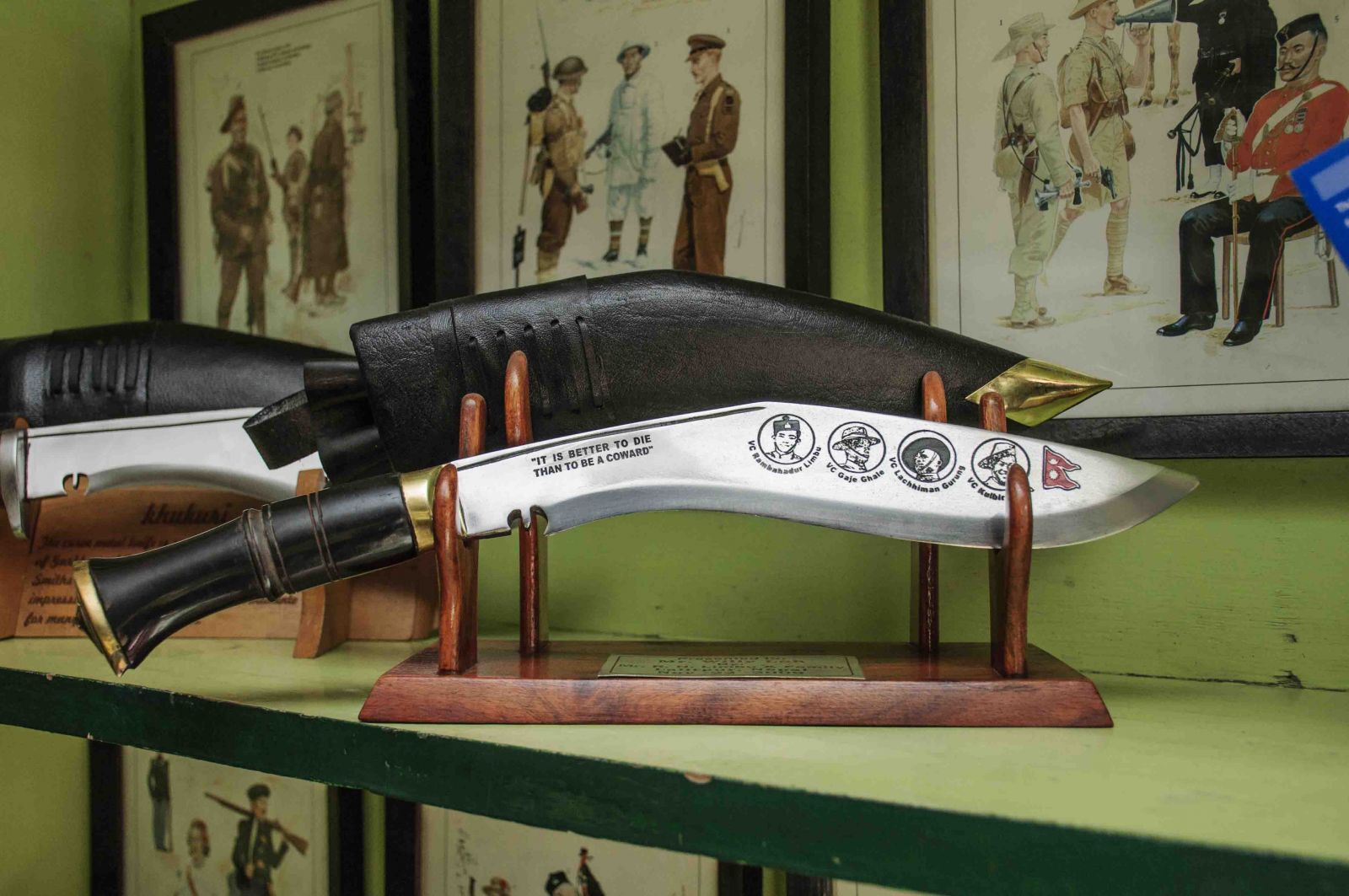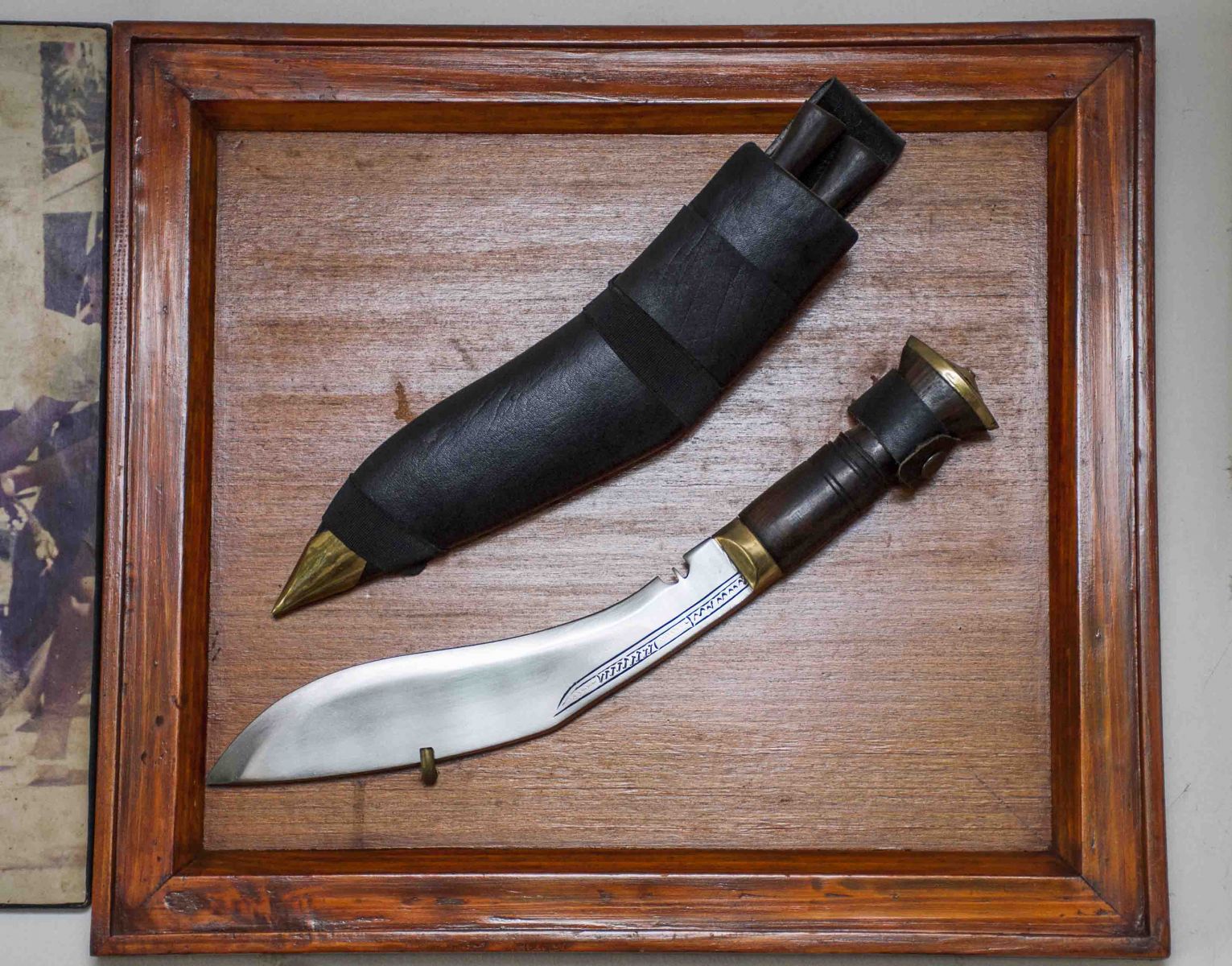
The Cutting Edge: Legacy of the Khukuri
It has instilled fear in countless enemy hearts in many great battles, and so is enshrined in martial history as a deadly weapon of war.
I was in Wangjiang Park, rediscovering the art of tea conversation with my Chinese friend, as the glorious afternoon tinted with gold slowly slipped away. The ambience of the park was represented in the green color of the Sichuan tea, and every sip lifted me to the realms of romantic nostalgia. We were talking about Nepali culture, when she asked me about the significance of khukuri, the Nepali knife that is an integral part of the country’s history, culture, and tradition. Before I could say a word, the Indian man sitting next to us talked about a Gurkha Rifles jawan (soldier) traveling on a train in Gorakhpur. Armed with just a khukuri, he had taken on a gang of forty armed dacoits singlehandedly when he saw them looting the passengers, and thus saved the day.
This soldier, Bishnu Shrestha, was just one of the many battle-hardened brave Gurkhas who use the legendary khukuri. Nepali soldiers have been using the iconic weapon for centuries in hand-to-hand combat. It was popularized by King Prithvi Naryan Shah's army during the unification of Nepal, and continued to create history in the years that followed. In addition to other battles, the 1814-1816 Anglo-Nepal War and the two World Wars further enhanced its reputation as a formidable weapon. In those days, the khukuris were slightly larger and more curved than the current khukuris used by Gurkha soldiers. It is said that the British used posters of Gurkhas sharpening their khukuris as a propaganda tool to instill fear in the minds of the Argentine soldiers during the Falklands War in 1982!
There are many different kinds of knives in the world, such as kilas, the ritual daggers used in Tibet, the misericorde knives used by the French knights, and the keris that are popular among the indigenous people of Indonesia, Malaysia, and Thailand, but none are as famous as the khukuri. The khukuri has an inwardly curved blade. The shape varies considerably, depending on the use and the maker; it can be straight or highly curved, with angled or smooth spine. The handles are made of different materials like hardwood, horn of water buffalo, animal bone, or metal. It is a tool used everywhere, from villages to the kitchens of the cities. It is a utility weapon used for chopping firewood, digging, cutting meat and vegetables, skinning animals, and so forth.
The khukuri is not only a world-class combat knife, but also has great cultural and religious significance. During Nepali weddings, the groom puts on a traditional outfit, the daura-suruwal, which is cinched with a belt, called the patuka, into which is tucked a khukuri. The type of khukuri used in weddings, called kothimora, has a silver-embossed dark tan leather scabbard and water buffalo horn handle, and is studded with imitation stones. Unlike other khukuris, the velvet fabric is completely discarded, and buffalo hide is used as the background, on top of which silver is laid artistically. The silver work is done by hand. Another use of the khukuri is for slaughtering animals during festivals such as Dashain. The sacrificial knife has an eight-inch blade and seven-and-a-half- inch handle, and is made from wood, and aluminum or brass. Its sheath is made from buffalo leather.
Skillful craftsmen from different parts of the country give their personal touch to each khukuri. Historically, the Kamis are the craftsmen involved in the art of khukuri-making. It takes three men to make one khukuri in a day. First, the metal is measured, and then it is heated, chiseled, and hammered in fire to the desired size and shape. Next, the blade is polished, using a machine, and the handle is added. Although khukuris are produced in all parts of the country, the majority is made in eastern Nepal, in places like Dharan, Bhojpur, Dhankuta, and Chainpur. Khukuris are exported to Europe, mostly to countries like Britain and France, as well as to America. The price of the khukuri ranges from a thousand rupees to thirty thousand rupees, depending on the type you want to own.
Sanjay Lama, the owner of Khukuri House, has been making khukuris for more than twenty-five years now. His father, Lalit Kumar Lama, was once a Warrant Officer Class 2 in the British Gurkha regiment. After his retirement, he returned to Nepal. "During those days, khukuris used to be sold by street vendors, and seeing the sorry state of the khukuris, I and my father decided to open Khukuri House," discloses Sanjay. He describes the different types of khukuris:
|
|
Service No. 1: Service No.1 is the most popular khukuri because of its association with the Gurkha soldiers. It is issued to all British Gurkha soldiers on enlistment, and they retain it throughout their army career. It is very special to the soldiers, since the blade is inscribed with their recruitment date. The scabbard is made of leather of water buffalo, and the handle is made of its horn. The scabbard has twin stripes and brass bottoms at the back, for the belt to go through, unlike other khukuris. The size of the blade is around ten inches, and it weighs around 650 grams.
Service No. 2: Service No. 2 is similar to Service No. 1; it is also called Service Ceremonial, because the soldiers use it when they march in the parade ground in ceremonial dress. The blade is slightly bigger, at ten-and-a-half-inches, and it weighs 700 grams.
Bhojpure: Coming from Bhojpur in eastern Nepal, it is the most commonly used khukuri in the country. It is used for everyday domestic work, and also for religious ceremonies. Some of these khukuris are artistically engraved with dragons. It is believed that every family must possess at least one of these khukuris, since they bring prosperity and good fortune. The size of the blade is ten inches, and it weighs 750 grams. The handle is made up of either water buffalo horn, or rosewood.
Dhankute: It has a slimmer and lighter blade, compared to that of the army khukuris. Only the skilled craftsmen of Dhankuta, in eastern Nepal, can make this kind of khukuri, which is embellished with symbols such as shreepech (crown), danphe (the national bird), Gurkha insignias, crossed khukuris, and the national fish, aasla.













